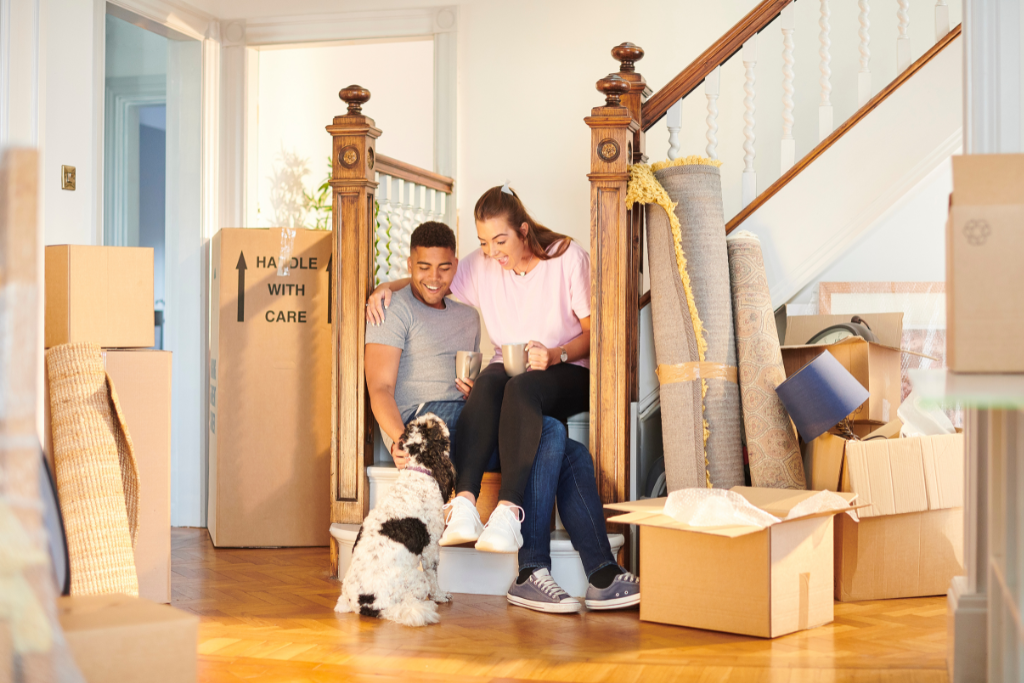Before Moving
Find a new vet
With the shortage of veterinarians across North America, it is important to choose a new veterinarian in advance. Some veterinarians have waiting lists of several months. It’s best to get on that list ahead of time in case you need your vet in the first few weeks. When researching, consider the vet’s proximity, cleanliness, online reviews, and if they have a 24/7 emergency option. *Your first visit to the vet is a good time to update your dog’s microchip information. Also take this opportunity to change the address on your dog’s collar!
Learn about the regulations in your new city
The city you currently live in may have different regulations than the city you are moving to. Here are some examples:
- Obligation to microchip
- Obligation of sterilization
- Prohibition of certain breeds
- Obligation to have your dog on a leash in public places
- Obligation of muzzles for certain races
- Obligation to vaccinate against rabies
- Obligation to protect against ticks and fleas (some places have more than others!)
Crate train your dog through positive reinforcement
Despite contrary belief, a crate can be a peaceful and comfortable place for a dog if used properly. If you’re going to be traveling a long distance with your dog during your move, it’s best to keep him comfortable in a transport crate. The crate can also be useful on moving day. Use positive reinforcement by getting your dog used to the crate a few weeks before the move. Positive reinforcement can be provided by giving him treats in an interactive toy such as a KONG as soon as he enters the crate.
Pack your boxes in front of your dog
Moving with a dog can be very scary for him because of the movement, the noise and all the changes going on around him. Pack your boxes in front of your dog to get him used to the hustle and bustle of moving.
Pack a bag with your dog’s essentials
Moving houses with pets requires organization. To avoid rummaging through boxes, pack a bag with your dog’s essentials. This will come in handy the first week of your move while you’re unpacking all your other items.
Moving Day
Make your dog comfortable on the road
If you have accustomed your dog to the crate, it is a preferred method for long distances on the road. Some dogs are comfortable on the road and others get anxious. If your dog is anxious on the road, ask your veterinarian to prescribe medication for dog anxiety. This medication will only be helpful for one day. To make your dog comfortable, give him toys, treats and feed him small portions at a time to avoid nausea and vomiting.
Make the new home safe and properly inspect it
Before letting your dog loose in the home, be sure to inspect the area for hazards such as electrical wires, sharp edges and areas that may be prone to runaways and falls. If your dog has physical limitations, make sure all areas are accessible and adapt them if necessary.
Slowly introduce your dog to his new environment
When moving with your dog, it is important to slowly introduce him to his new environment in order to avoid him marking his territory (urinating) everywhere in your home. To prevent this, keep the same bed and the same toys without washing them so that he recognizes the smells of his previous home. Also, to help your dog associate positively with his new environment, give him treats or an interactive toy. During the hassle of moving, put him in a comfortable, dedicated place like his bed or crate.
Optional: dog boarding
Moving can be a stressful time for a dog, which is why some owners prefer to distract their dogs by sending them to a boarding facility for a day. Boarding gives your dog the advantage of interacting with other dogs without the anxiety of being at home during the hussle and bussle of moving.
After Moving
After your move, it is important to keep the same routine with your dog as much as possible. The time of day that your dog does his business, eats, and goes for walks should remain the same so that he can adjust to his new environment. The first time your dog is left alone, give him an interactive toy with treats to help him associate your departure positively. Thinking of surrendering our dog when moving? Here are 5 Options to Consider!




